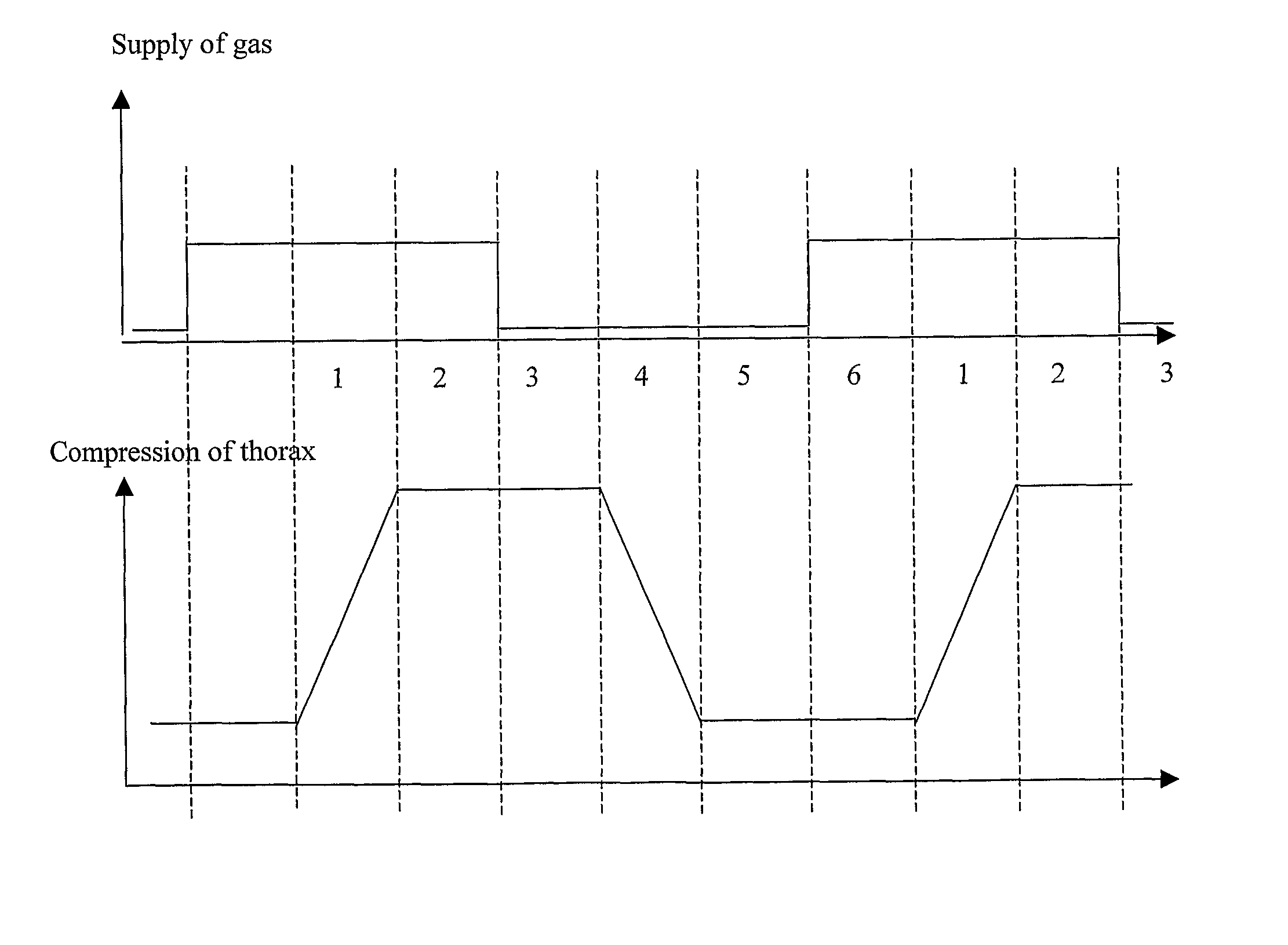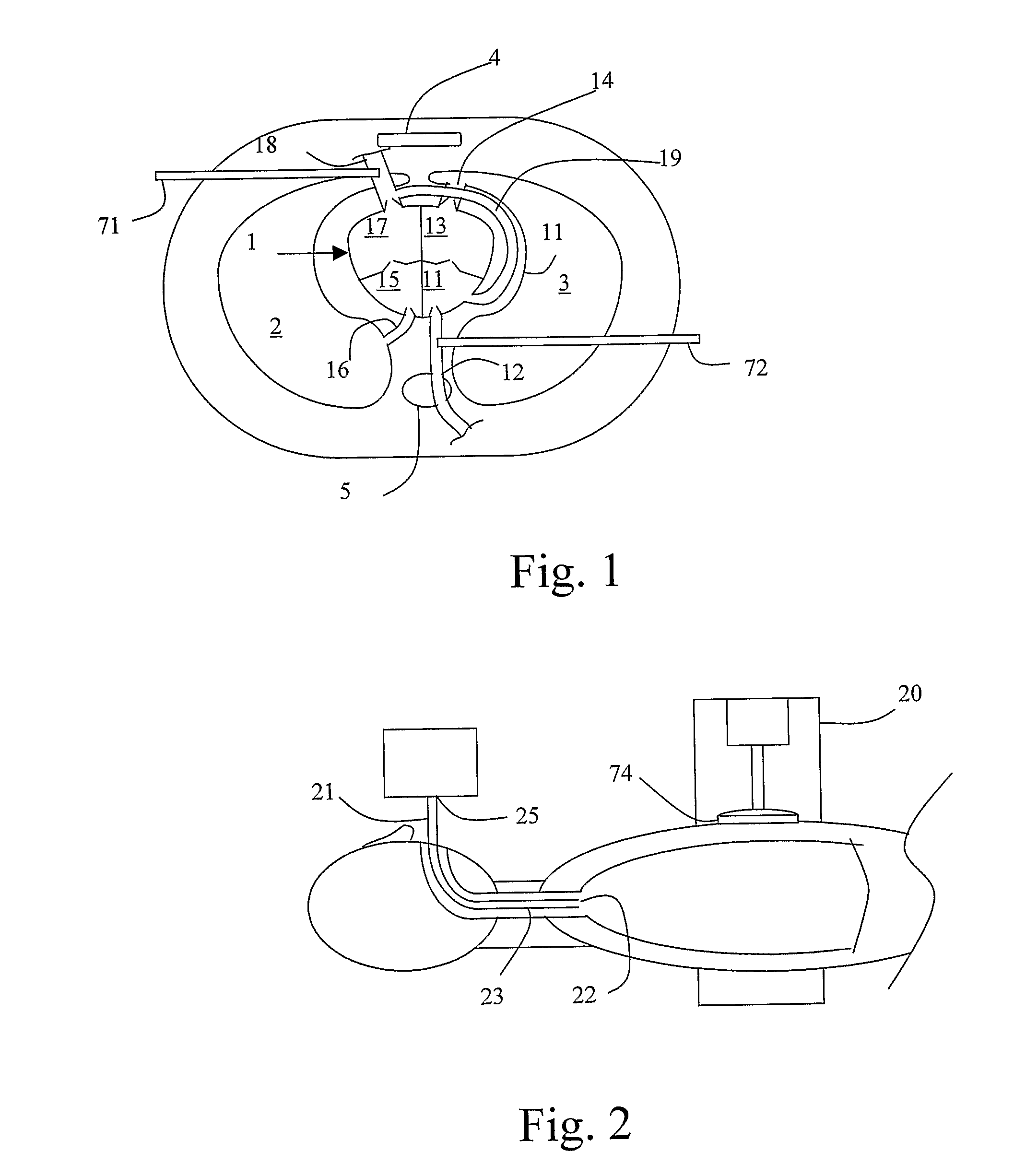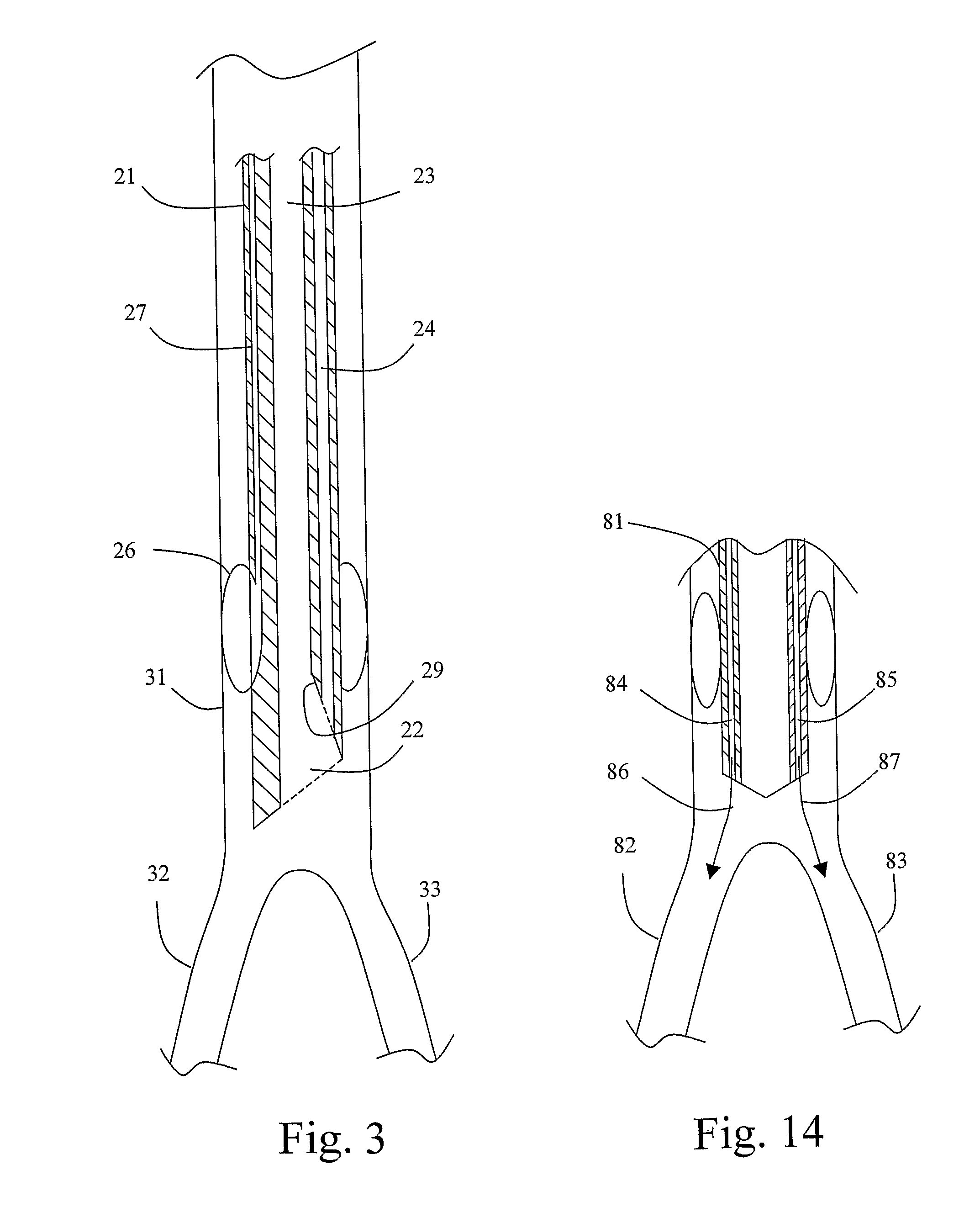Method and device for gas supply during cardiopulmonary resuscitation
a cardiopulmonary resuscitation and gas supply technology, applied in the direction of tracheal tubes, artificial respiration, medical atomisers, etc., can solve the problems of irreparable damage to the brain and other organs, permanent damage to the heart, etc., to alleviate, eliminate or mitigate one or more of the above-identified deficiencies and disadvantages.
- Summary
- Abstract
- Description
- Claims
- Application Information
AI Technical Summary
Benefits of technology
Problems solved by technology
Method used
Image
Examples
Embodiment Construction
[0039]Below, several embodiments of the invention will be described with references to the drawings. These embodiments are described in illustrating purpose in order to enable a skilled person to carry out the invention and to disclose the best mode. However, such embodiments do not limit the invention. Moreover, other combinations of the different features are possible within the scope of the invention.
[0040]FIG. 1 is a cross-sectional view of the thorax of a patient, comprising a heart 1 in a horizontal section and two lungs 2, 3 in a vertical section. The heart 1 is positioned between a sternum 4 and a spine 5, which are shown schematically.
[0041]The heart 1 comprises a right atrium 11 connected to the vena cava 12 and a right ventricle 13 connected to the lung arteries 14. The blood is returned from the lungs to the left atrium 15 via the lung veins 16 and is pumped out to the aorta 18 by means of the left ventricle 17. The coronary arteries 19 supply blood to the heart and exte...
PUM
 Login to View More
Login to View More Abstract
Description
Claims
Application Information
 Login to View More
Login to View More - R&D
- Intellectual Property
- Life Sciences
- Materials
- Tech Scout
- Unparalleled Data Quality
- Higher Quality Content
- 60% Fewer Hallucinations
Browse by: Latest US Patents, China's latest patents, Technical Efficacy Thesaurus, Application Domain, Technology Topic, Popular Technical Reports.
© 2025 PatSnap. All rights reserved.Legal|Privacy policy|Modern Slavery Act Transparency Statement|Sitemap|About US| Contact US: help@patsnap.com



